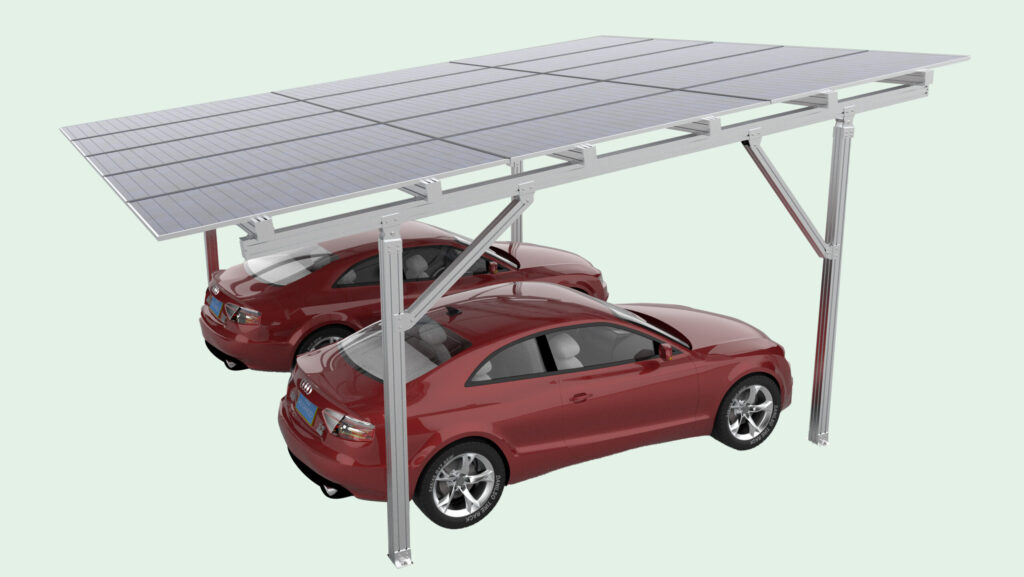The attenuation monitoring and maintenance of solar panels is a key link to ensure their efficient and stable operation. The following are the key points to note regarding the attenuation monitoring and maintenance of solar panels:
First, attenuation monitoring
Clarify the monitoring purposes and standards
The purpose of monitoring is to assess the degree of performance degradation of solar panels so that measures can be taken in a timely manner.
Use international or industry-recognized standards, such as IEC60891, etc., as the basis for monitoring.
Select the appropriate monitoring equipment
Photovoltaic module I-V Characteristic Curve tester: It is used to test the current-voltage (I-V) characteristic curve of battery modules and analyze the performance status of the modules.
EL detector: By taking near-infrared images of components, it detects whether there are defects such as hidden cracks, fragments, false soldering, and broken grids in the components.
Multimeter and solar simulator: They are used to measure the output power of photovoltaic modules within a certain period of time and calculate their attenuation rate.
Implement scientific monitoring methods
Under standard test conditions (STC, that is, a light intensity of 1000W/m² and a cell temperature of 25℃), the initial output power of the photovoltaic module and the output power after a period of time were measured.
Calculate the ratio of the difference between the two to the initial output power to obtain the attenuation rate. The greater the attenuation rate, the more severe the attenuation degree of the photovoltaic module.
Regular (such as annually) monitoring should be carried out to detect the trend of performance degradation in a timely manner.
Consider multiple influencing factors
When analyzing the reasons for the attenuation of solar panels, multiple factors should be comprehensively considered, such as light intensity, temperature, obstructions, dust and pollutants, etc.
Special attention should be paid to the impact of high temperatures on the performance of solar panels, as high temperatures can cause a drop in battery voltage, thereby reducing the power generation capacity.
Second, key points to note for maintenance
Regular cleaning
The surface of solar panels is prone to accumulate dust, leaves, bird droppings and other debris. These substances can impede the entry of light and affect the efficiency of power generation.
Regularly (such as monthly), gently wipe the surface with a soft-bristled brush or cleaning cloth. You can use warm water and a small amount of neutral detergent, but avoid using strong acid or alkali cleaners to prevent damage to the surface coating.
Cleaning work should be carried out when the light is weak, such as in the morning or evening, to avoid damaging the components when cleaning under strong sunlight.
Check the connecting wires and joints
Regularly inspect the connection wires and joints of the solar panels to ensure they are not loose or corroded.
If any problem is found, repair or replace the damaged part in time to avoid current interruption or leakage.
Prevent shading
Make sure that the installation positions of solar panels are not blocked by the shadows of buildings, trees, etc.
Regularly (such as every quarter) check the installation environment to ensure there are no new obstructions.
Prevent water accumulation
When installing, ensure that the solar panels have a certain inclination Angle to allow rainwater to flow away smoothly and avoid water accumulation on the panel surface.
Regularly check the drainage of the solar panels to ensure there is no water accumulation.
Check the temperature
High temperatures may affect the efficiency of solar panels, so the temperature of the panels should be checked regularly.
During the hot season, ensure that the solar panels operate within an appropriate temperature range and take cooling measures if necessary.
Regularly inspect photovoltaic modules
Use detection instruments to conduct regular (such as annually) inspections of the appearance and electrical performance of solar panels.
Check whether there is any color difference or peeling of the coating on the surface of the component glass, whether there are bubbles or yellowing of the EVA inside, and whether there are any burning marks or other color changes on the battery cells.
Test the working voltage and current of the component string to ensure the normal operation of the components.
Pay attention to the power generation situation
Record the power generation of solar panels regularly (such as monthly) and compare it with historical data.
If an abnormal decline in power generation is detected, the cause should be identified promptly and measures taken.
Professional maintenance
In case of any malfunction or battery inverter failure, do not repair or disassemble the solar panels at will. Instead, seek professional maintenance personnel to solve the problem.
Regularly (such as annually) invite professional maintenance teams to conduct comprehensive inspections and maintenance of the solar panel system.
Through scientific attenuation monitoring and meticulous maintenance work, the efficient and stable operation of solar panels can be ensured, their service life can be prolonged, and the power generation efficiency can be improved.


